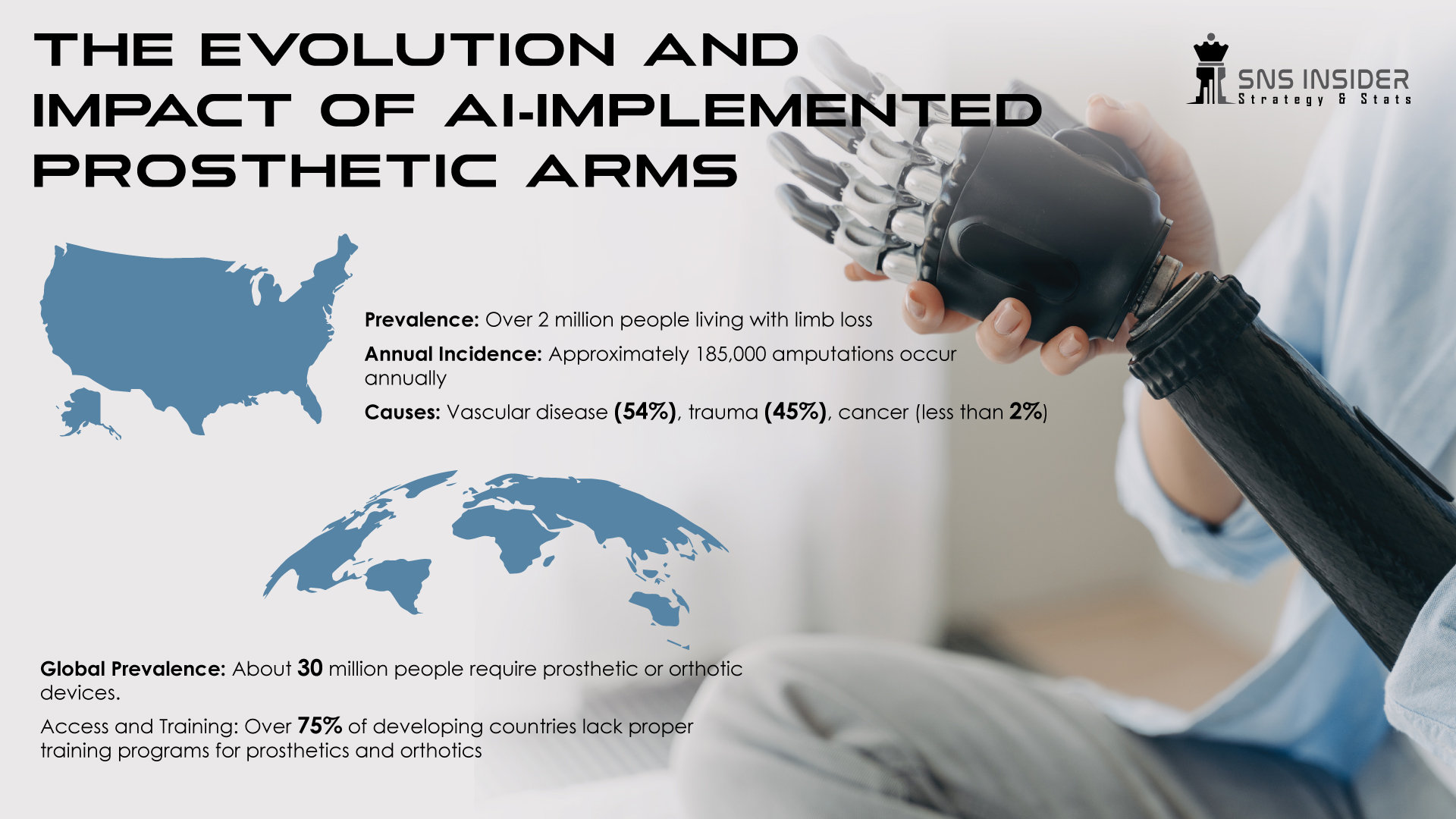
Prosthetics have come a long way with considerable progress in the past decade, moving from rudimentary artificial limbs made of wood to more advanced biomechanical devices. Furthermore, the implementation of AI in prosthetics, particularly on prosthetic arms, has been one of the most significant milestones and is still regarded as a breakthrough in the medical field. The union between prosthetic devices and AI offers an incredible opportunity to change the lives of amputees. In this piece, we are going to cover the development of prosthetic arms, the current market situation, the future, as well as the pros and cons of the aforementioned technology.
Development of Prosthetic Arms
Prosthetics have a history as shown as ancient Egyptian mummified stump, but as one can see, it was rudimentary. Towards the twentieth century, developments started to rise due to the utilization of modern materials, such as plastics and lightweight metals. The inception of the myoelectric prosthetic device, which includes sensors that are linked to muscle utilization via electric signal, was perhaps the biggest leap for prosthetics. Just like many biotic limbs, they are walk-operated through electric signal generated by the muscle sensor. Nowadays, the most recent development of prosthetic is the utilization of AI. The newest technology for prosthetic arms to emerge is the influence of AI technology. These arms have complex algorithms that help to process all the data to help in the action.
The Current Market
Here are some of the leading brands of AI-implemented prosthetic arms:
1. The future of AI-implemented prosthetic arms
Today, AI- implemented prosthetic arms are widely used with a limited degree of AI use. However, there are still a few areas in which AI use is not widespread, and which will likely develop in the future. They are as follows:
Today, most prosthetic arms, including AI-implemented ones, use some form of sensory feedback. However, in the future, it is likely to develop and the prosthetic arms will be able to feel the texture, temperature, and the pressure. BCIs will also become more advanced, and the communication between the brain and the prosthetic arm will be more direct and thus more control and faster response time. Lastly, advances in 3D printing and AI will make very personalized prosthetics more accessible and thus more widespread. It can also be expected that the AI use will become more affordable and the total cost of AI-implemented prosthetic arms will decrease as the technology develops and becomes more affordable.
2. Pros and cons of AI implementation
Pros:
Cons:
The user may become heavily dependent on the technology. In this case, any malfunction or software issue would exert its full influence on the user’s life.
A food for thought
In conclusion, while we are advancing in the technology of AI-implemented prosthetic arms, it is crucial to consider factors other than the technology or the medicine, such as the ethics in the use of them. Regarding the use of AI in developing prosthetic arms, one of the major scenarios in which we may find ourselves is the balance of developing the maximum number of innovative techniques in developing an AI-implemented prosthetic arm and making this technology available for all people in need, regardless of their economic situation.
How do you believe the course can to address the matters related to the future of AI being used in prosthetic arms and make changes that would ensure all each such innovation is made available for anyone in need? What do you think can be done to tackle the results of using the highly-advanced technology in our lives?
Contact Us:
Akash Anand – Head of Business Development & Strategy
info@snsinsider.com
Phone: +1-415-230-0044 (US)